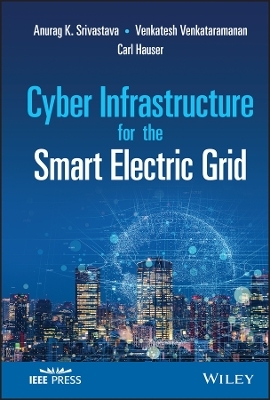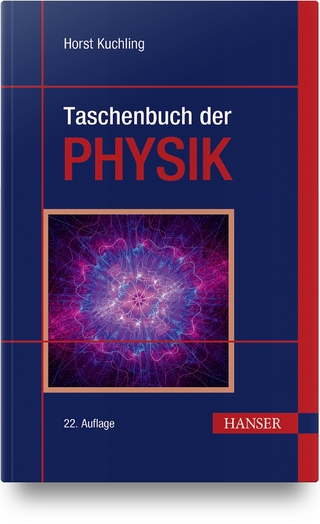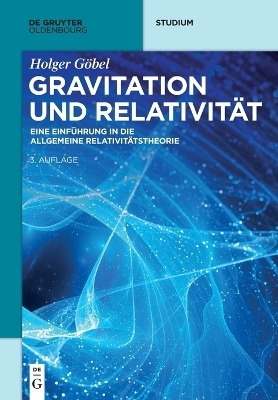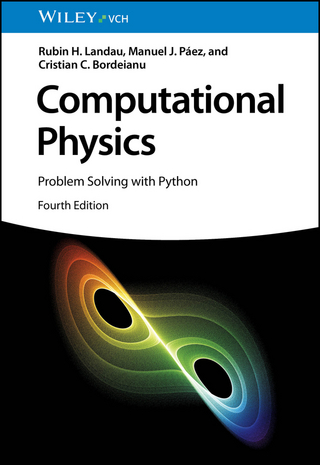
Cyber Infrastructure for the Smart Electric Grid
Wiley-IEEE Press (Verlag)
978-1-119-46075-6 (ISBN)
As electric power systems undergo a transformative upgrade with the integration of advanced technologies to enable the smarter electric grid, professionals who work in the area require a new understanding of the evolving complexity of the grid.
Cyber Infrastructure for the Smart Electric Grid delivers a comprehensive overview of the fundamental principles of smart grid operation and control, smart grid technologies, including sensors, communication networks, computation, data management, and cyber security, and the interdependencies between the component technologies on which a smart grid’s security depends. The book offers readers the opportunity to critically analyze the smart grid infrastructure needed to sense, communicate, compute, and control in a secure way.
Readers of the book will be able to apply the interdisciplinary principles they’ve learned in the book to design and build secure smart grid infrastructure. Readers will also benefit from the inclusion of:
A thorough introduction to the key skills required by engineers to manage the evolving complexity of the electric grid
An exploration of the interdependencies of smart grid infrastructure required to sense, communicate, compute, control, and manage data securely
Software modules in .exe format for demonstrations and exercises
An examination of the fundamental principles of smart grid operation and control
Perfect for professionals working in the electric utility industries at electric utilities, vendors, and the national labs, Cyber Infrastructure for the Smart Electric Grid will also earn a place in the libraries of senior undergraduate and graduate students studying electrical engineering and smart grids.
Anurag K. Srivastava, PhD, is the Raymond J. Lane Professor and Chairperson of the Lane Department of Computer Science and Electrical Engineering in the Benjamin M. Statler College of Engineering and Mineral Resources at West Virginia University. He is the director of the Smart Grid Resiliency and Analytics Lab (SGREAL) and an IEEE Fellow. Venkatesh Venkataramanan, PhD, is a Researcher at the National Renewable Energy Laboratory, working on cyber-physical systems. He was previously with Washington State University and Massachusetts Institute of Technology. Carl Hauser, PhD, is Emeritus Faculty in Computer Science at Washington State University. He received his PhD from Cornell University. Following 20 years in industry at IBM Research and Xerox Research he joined WSU where he conducted research on communications and cybersecurity for electric grid operations.
1 Introduction to the Smart Grid 1
1.1 Overview of the electric power grid 1
1.2 What can go wrong in power grid operation 12
1.3 Learning from past events 14
1.4 Towards a smarter electric grid 18
1.5 Summary 20
1.6 Problems 20
1.7 Questions 22
2 Sense, communicate, compute and control in secure way 23
2.1 Sensing in smart grid 25
2.2 Communication infrastructure in smart grid 37
2.3 Computational infrastructure and control requirements in smart grid 38
2.4 Cyber security in smart grid 43
2.5 Summary 45
2.6 Problems 45
2.7 Questions 47
3 Smart Grid Operational Structure and Standards 49
3.1 Organization to ensure system reliability 53
3.2 Smart grid standards and interoperability 56
3.3 Operational structure in the rest of the world 58
3.4 Summary 58
3.5 Problems 59
3.6 Questions 60
4 Communication performance and factors that Affect it 63
4.1 Introduction 63
4.2 Propagation Delay 66
4.3 Transmission Delay 67
4.4 Queuing Delay and Jitter 69
4.5 Processing Delay 73
4.6 Delay in Multi-hop networks 73
4.7 Data Loss and Corruption 74
4.8 Summary 76
4.9 Exercises 76
5 Layered communication model 81
5.1 Introduction 81
5.2 Physical layer 86
5.3 Link layer: service models 87
5.4 Network layer: addressing and routing 92
5.5 Transport layer: datagram and stream protocols 100
5.6 Application layer 107
5.7 Glue protocols: ARP, DNS 109
5.8 Comparison between OST and TCP/IP models 112
5.9 Summary 113
5.10 Problems 113
5.11 Questions 115
6 Power system application-layer protocols 117
6.1 Introduction 117
6.2 SCADA protocols 118
6.3 ICCP 125
6.4 C37.118 127
6.5 Smart metering and distributed energy resources 129
6.6 Time synchronization 132
6.7 Summary 134
6.8 Problems 134
6.9 Questions 136
7 Utility IT infrastructures for control center and Fault-tolerant computing 137
7.1 Conventional control centers 137
7.2 Modern Control Centers 141
7.3 Future Control Centers 143
7.4 UML, XML, RDF,and CIM 145
7.5 Basics of Fault-tolerant computing 154
7.6 Cloud computing 157
7.7 Summary 159
7.8 Problems 160
7.9 Questions 161
8 Basic security concepts, cryptographic protocols, and access control 163
8.1 Introduction 163
8.2 Basic Cybersecurity Concepts and Threats to Power systems 164
8.3 The CIA Triad and Other Core Security Properties 168
8.4 Introduction to Encryption and Authentication 178
8.5 Cryptography in power systems 182
8.6 Access control 187
8.7 Summary 189
8.8 Problems 190
8.9 Questions 191
9 Network attacks and protection 193
9.1 Attacks to network communications 193
9.2 Mitigation mechanisms against network attacks 202
9.3 Network protection through rewalls 208
9.4 Intrusion detection 210
9.5 Summary 214
9.6 Problems 214
9.7 Questions 216
10 Vulnerabilities, and Risk Management 217
10.1 System vulnerabilities 217
10.2 Security mechanisms: Access control and Malware Detection 229
10.3 Assurance and Evaluation 233
10.4 Compliance: Industrial practice to implement NERC CIP 241
10.5 Summary 242
10.6 Problems 243
10.7 Questions 244
11 Smart grid case studies 245
11.1 Smart Grid Demonstration Projects 245
11.2 Smart grid metrics 249
11.3 Smart Grid Challenges: Attack case-studies 250
11.4 Mitigation using NIST Cybersecurity Framework 257
11.5 Summary 259
11.6 Problems 259
11.7 Questions 261
Index
| Erscheinungsdatum | 17.12.2019 |
|---|---|
| Reihe/Serie | IEEE Press |
| Sprache | englisch |
| Maße | 170 x 244 mm |
| Gewicht | 425 g |
| Themenwelt | Naturwissenschaften ► Physik / Astronomie |
| Technik ► Elektrotechnik / Energietechnik | |
| ISBN-10 | 1-119-46075-1 / 1119460751 |
| ISBN-13 | 978-1-119-46075-6 / 9781119460756 |
| Zustand | Neuware |
| Informationen gemäß Produktsicherheitsverordnung (GPSR) | |
| Haben Sie eine Frage zum Produkt? |
aus dem Bereich


